Guys, since the TVS Apache RTX 300 launched, it has caused a massive stir in the adventure market because, dude, it’s offering so many features in such a low price segment that everyone wants to choose this bike. On the other hand, let’s talk about the Suzuki V-Strom SX 250, which has recently launched with new color graphics. Should you choose this bike or the newly launched TVS Apache RTX 300? So, today’s post we are going to do a comparison of these two bikes.
Looks and Design
Both bikes offer appealing looks and design. I won’t compare them directly, but you can share your preferences in the comments below.
Engine Performance
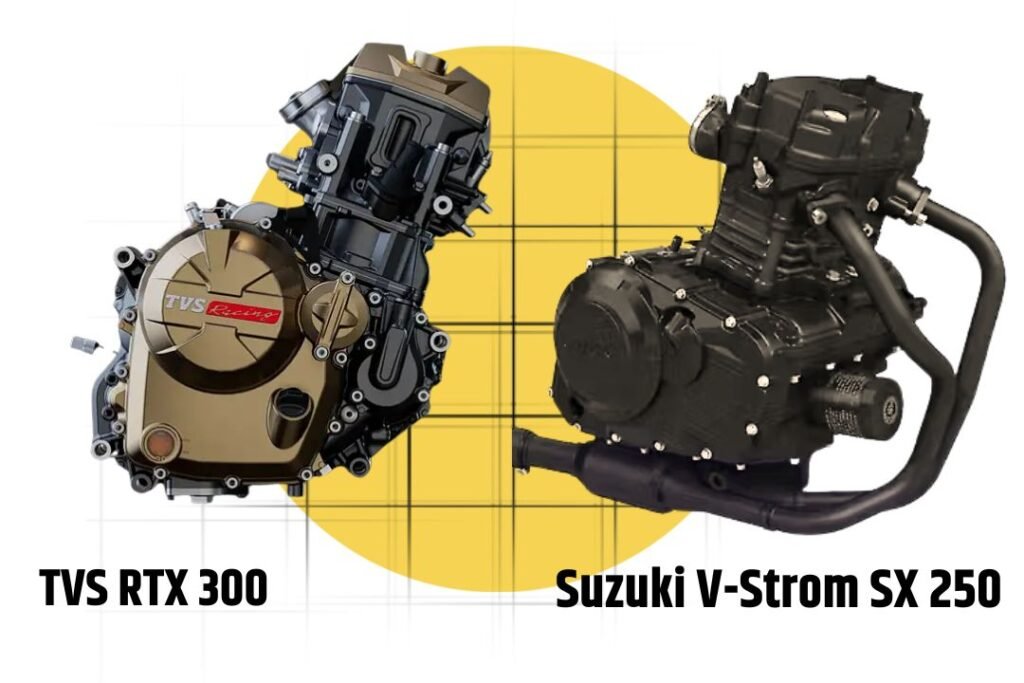
The TVS Apache RTX 300 features a new RTXD4 engine, a 299.1cc single-cylinder unit delivering 36 PS of power and 28.5 Nm of torque . In contrast, the Suzuki V-Strom SX 250 has a 250cc engine with 26 PS of power and 22.2 Nm of torque, using oil-cool technology . The power output and torque are relatively low for its displacement, giving the TVS Apache RTX 300 the edge in performance.
Features Overview
The TVS Apache RTX 300 comes packed with a full LED headlight setup and a 5-inch TFT console with TVS X-Connect, including Bluetooth connectivity, navigation, and Wi-Fi options . It also includes mirror mapping, call and SMS alerts, four riding modes, two-level switchable traction control, quick shifter, and cruise control.
Additional features like an adjustable windscreen, tire pressure monitoring system (in the top variant), GP Pro controls, USB charging port, and dual-channel ABS make it feature-rich, especially at its price point . The Suzuki V-Strom SX 250 offers similar basics like an LED headlight, digital meter console, Bluetooth connectivity, navigation, call and SMS alerts, adjustable windscreen, and USB charging port .
However, it lacks riding modes, traction control, cruise control, quick shifter, and tire pressure monitoring system. Overall, the TVS Apache RTX 300 stands out with its comprehensive feature set.
Suspension System
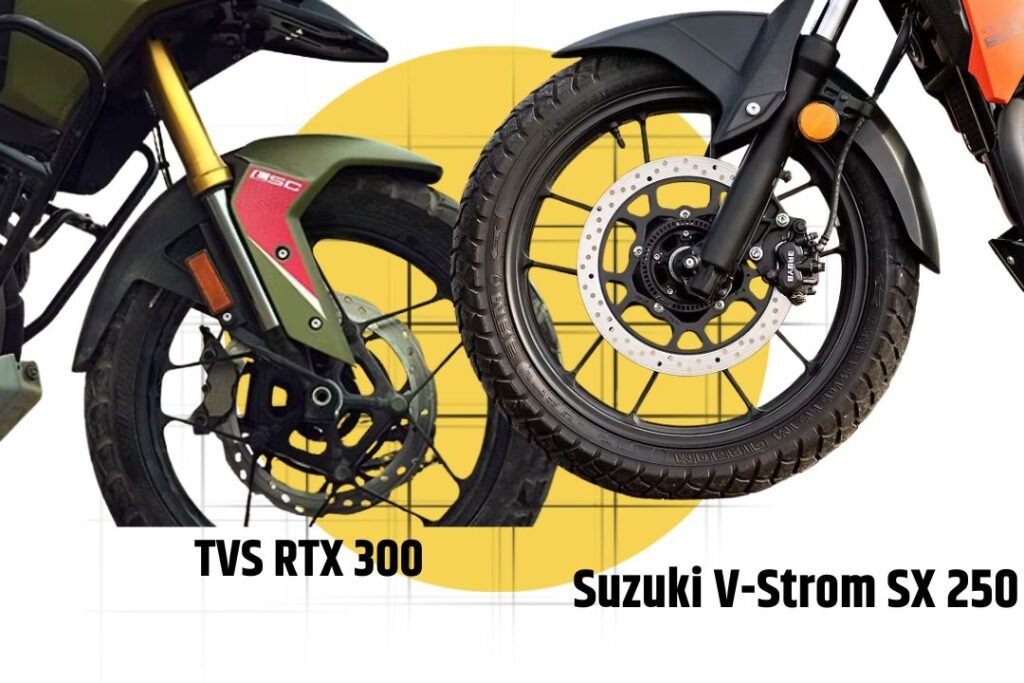
The TVS Apache RTX 300 uses 41mm USD forks in the front with 180mm travel and a rear mono suspension also with 180mm travel . The Suzuki V-Strom SX 250 relies on telescopic forks upfront and a rear mono suspension, which feel outdated by comparison . The TVS takes the win here for modern suspension tech.
Tires and Grip
The TVS Apache RTX 300 rides on 19-inch front wheels with 100/80 tires and 17-inch rear wheels with 150/70 radial tires, providing excellent grip .
The Suzuki V-Strom SX 250 has 19-inch front and 17-inch rear alloy wheels with 100/90 front and 130/70 rear tires . The wider rear tire on the TVS gives it better traction overall. So far, the TVS Apache RTX 300 is leading in most categories. Let’s move on to dimensions.
Dimensions and Practicality
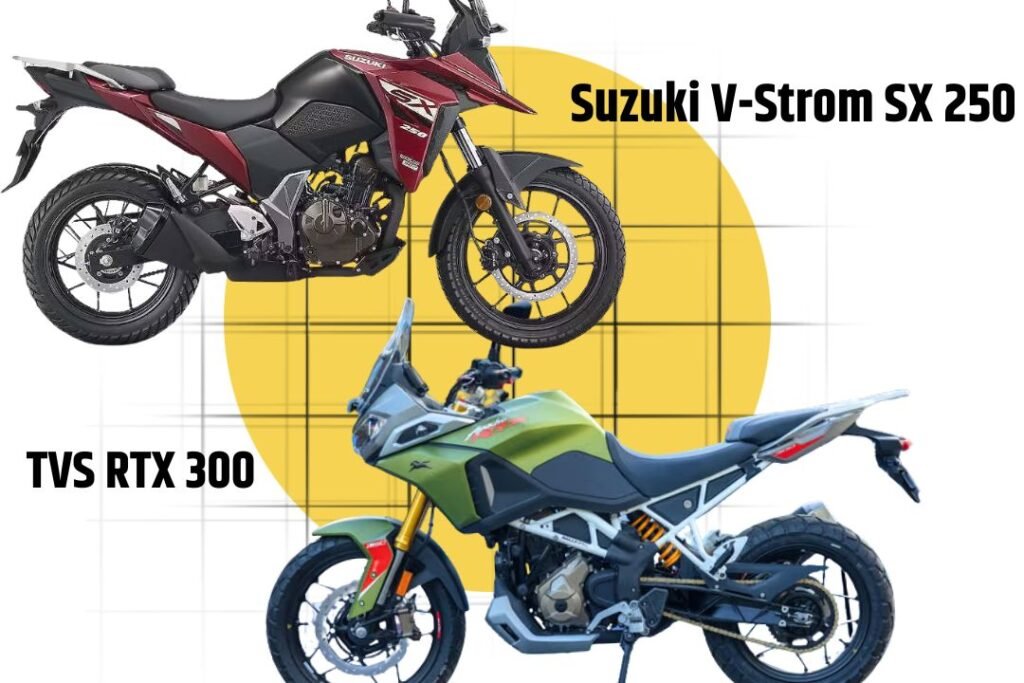
The TVS Apache RTX 300 has 200mm ground clearance, an 835mm seat height (which might challenge shorter riders), a 12.5-liter fuel tank, and 180kg kerb weight . The fuel tank feels a bit small compared to other adventure bikes, but it’s manageable.
The Suzuki V-Strom SX 250 offers 205mm ground clearance, the same 835mm seat height, a 12-liter fuel tank, and a lighter 167kg kerb weight . Dimensions are fairly even between the two.
Pricing and Value for Money
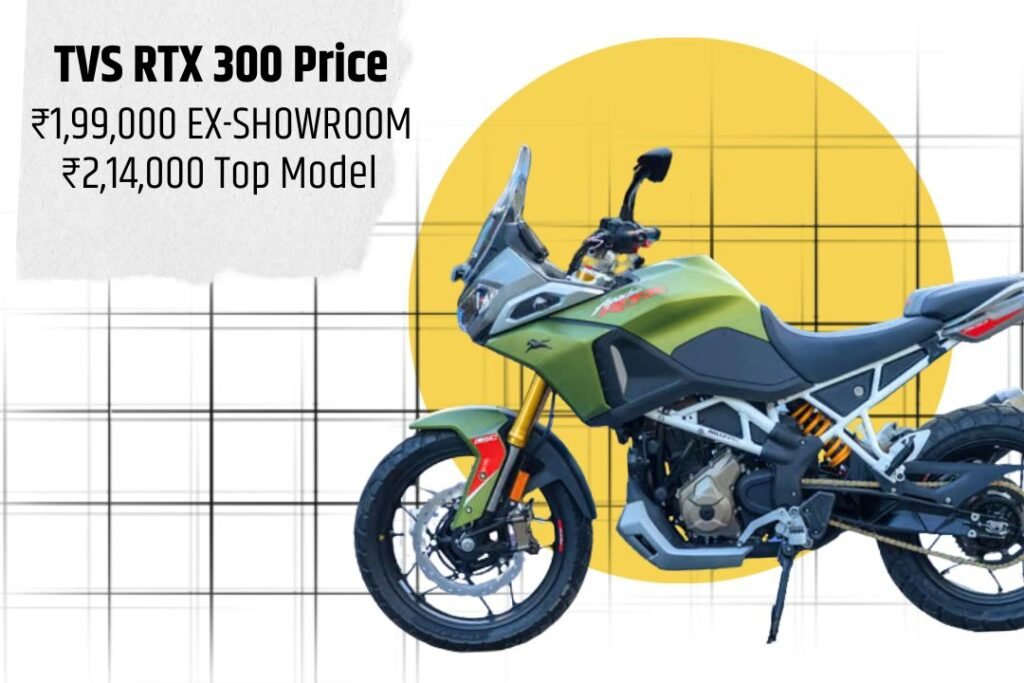
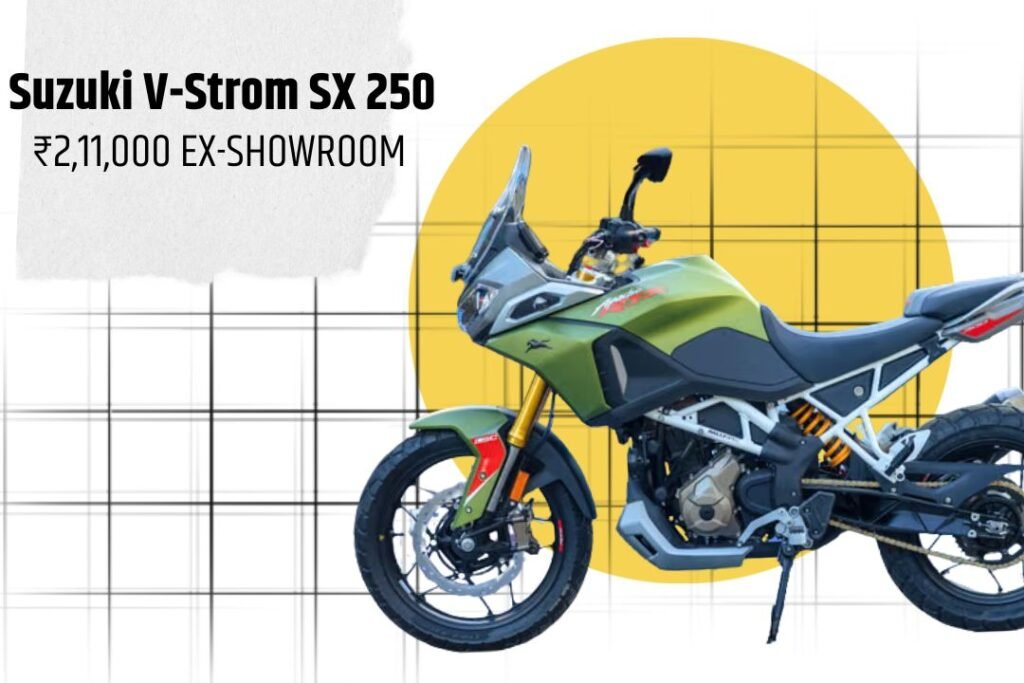
The TVS Apache RTX 300 starts at an introductory price of ₹1,99,000 . The Suzuki V-Strom SX 250 begins at ₹1,98,000 and goes up to ₹2,11,000 . With its loaded features and competitive pricing, the TVS Apache RTX 300 offers better value for money. If I were choosing, I’d go for the TVS.
This wraps up the comparison of these two bikes, covering their specs, pricing, and details. Which one appeals to you more, and why? Share your thoughts in the comments—we’ll catch up in the next article with more insights .
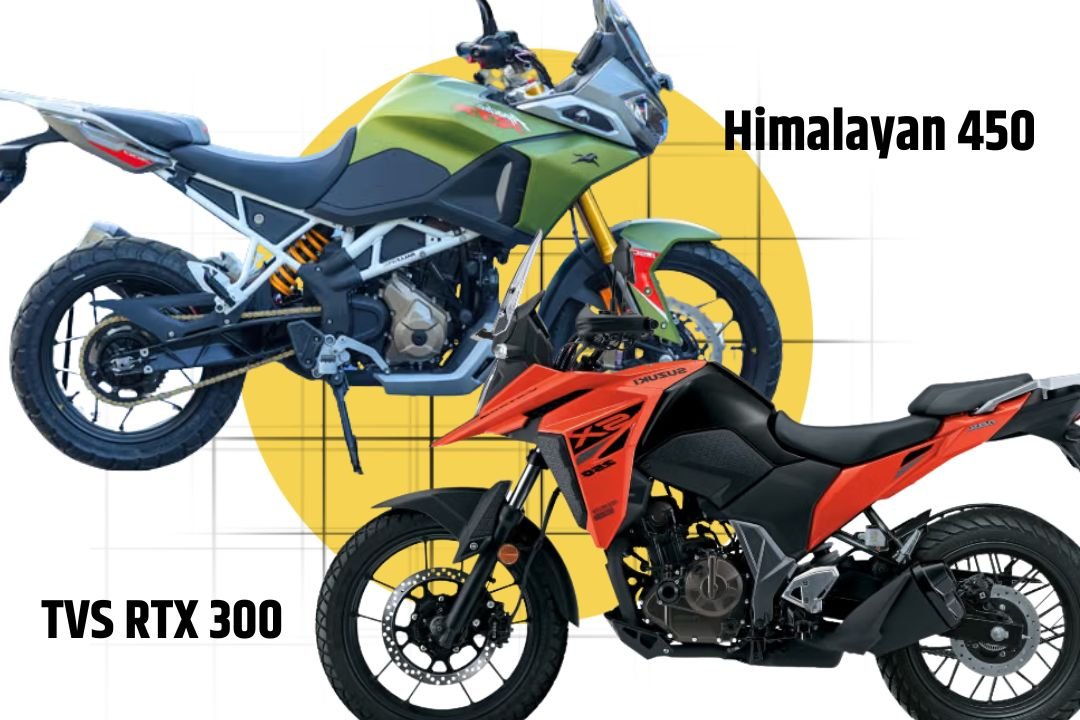

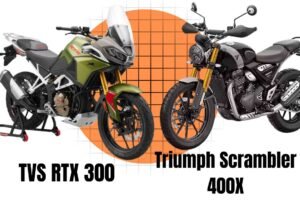



Be First to Comment